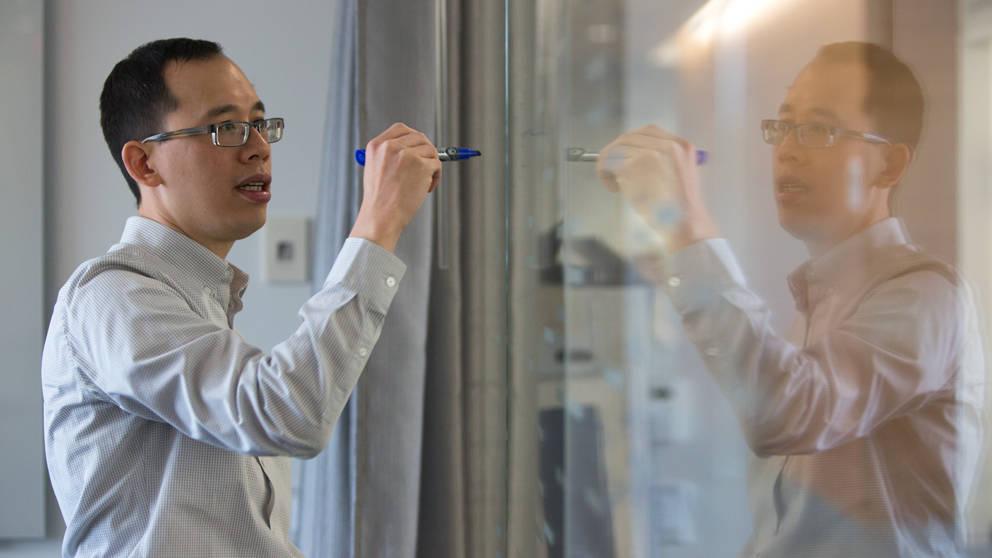
JAX Associate Professor Jeff Chuang, Ph.D. tracks the effects of chemotherapy on different sub-populations of cancer cells. The results indicate ways to improve therapy administration in human patients.
Cancer cells have two traits that help them evolve quickly—they have unstable genomes, and they grow and divide with incredible speed. Each tumor, therefore, contains a diversity of cells. Stress further accelerates the process, and the rapid evolution may yield therapy-resistant cells when doctors administer chemotherapy. It is, therefore, a vital process to study, but that has been difficult, unfortunately, given the need to frequently analyze tumor cells that are difficult to obtain from within a patient’s body.
What is the PDX model and how can it help?
Now, with patient derived xenografts (PDX), researchers can track cancer evolution with the needed frequency and precision. PDX models are immunocompromised mice engrafted with patient tumors, which can then grow and be dosed with chemotherapies to assess response. In “High-resolution deconstruction of evolution induced by chemotherapy treatments in breast cancer xenografts,” recently published in Nature Scientific Reports, JAX Associate Professor Jeffrey Chuang, Ph.D.Computational studies of cancer image and sequence data to improve treatment outcomesJeffrey Chuang, Ph.D., and colleagues followed the evolution of triple negative breast cancer (TNBC) xenografts from two patients. Using multiple analysis methods at different time points, they identified different cellular sub-types within the tumor tissue and tracked how they responded to conventional cancer therapies.
Attacking cancer cells with precision
The PDX samples were grown and further dissected over three to four passages in mice to provide sufficient tissue for multiple experiments. Using exome sequencing and a method called Droplet Digital PCR, which determines mutations and gene copy number changes with high precision, Chuang and his team assessed the effects of cisplatin, docetaxel, doxorubicin and cyclophosphamide on the PDX samples. Both tumors grew despite doxorubicin and cyclophosphamide treatment, both responded to docetaxel, while there was a differential response to cisplatin. They found that in one tumor, two stable populations of cells coexisted, which may have explained the differences in cisplatin sensitivity. They also traced the cell population history within both tumors with unprecedented resolution, in much the same way population geneticists reconstruct human population histories.
The cellular evolution and population histories of the tumors can have vital importance for clinical care. Time-dependent treatment strategies may be indicated to preferentially kill fast-growing cells while limiting the expansion of slow-growing, resistant cell populations. Also, this kind of multi-sample data may become an essential application for circulating tumor DNA (ctDNA) analysis, providing access to tumor cell composition and cancer evolution through minimally invasive means.
DOI:10.1038/s41598-018-36184-8